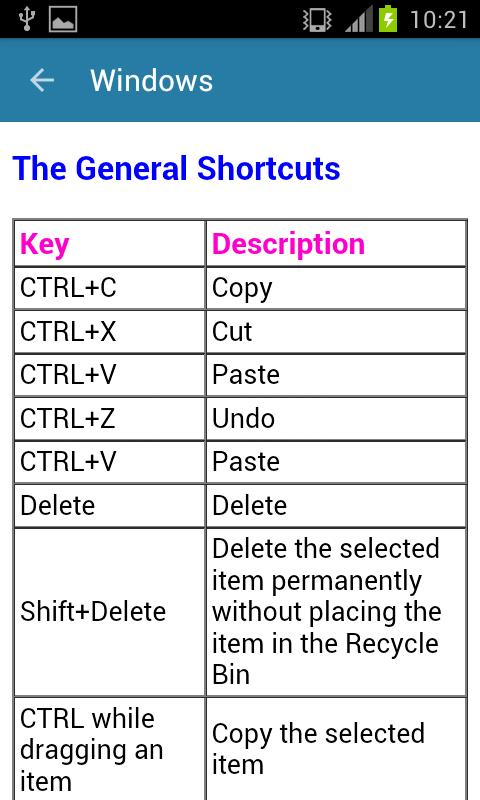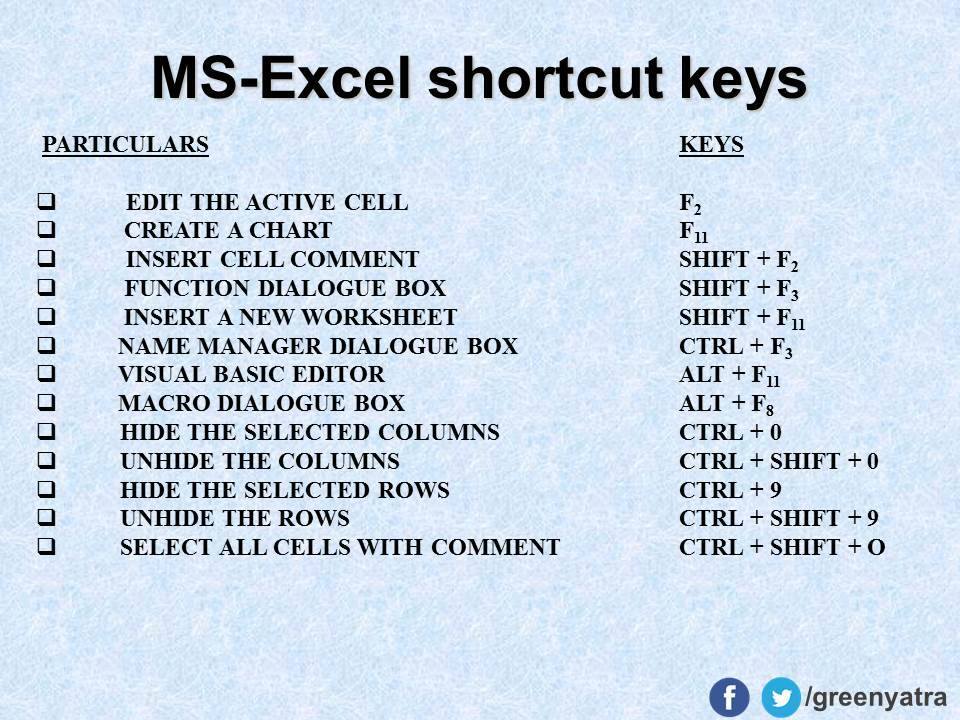You may have noticed many of the keyboard shortcuts are the same on iPad as they are on the Mac, such as using copy and paste, redo and undo, save, or bold and italicize selected text – this makes it easy to switch between the Mac and iPad, and it’s worth pointing out those particular shortcuts apply beyond Microsoft Word too. To use a keyboard shortcut that is the same as a default Mac OS X keyboard shortcut, you must first turn off that Mac OS X keyboard shortcut. On the Apple menu, click System Preferences. Under Hardware, click Keyboard, and then click the Keyboard Shortcuts tab. Extensive list of Keyboard shortcuts as a word document. Extensive list of Keyboard shortcuts as an excel document A Macintosh Keyboard is available showing general Macintosh keyboard shortcuts Go to Entering and Editing Text in Microsoft Word Go back to Using Microsoft Word to Produce Classroom Documents.
In most word processors it is possible to assign keyboard shortcuts to the various functions of the Zotero word processor plugin toolbar (i.e. add citation, edit citation etc.). How to do this depends on your word processor.
- Click the Office Symbol at the top right of the program.
- Select the “Customize Tab.”
- Click the “Customize” button at the bottom of the window next to “Keyboard Shortcuts.”
- Select the “Macros” category in the box on the left.
- Locate the Zotero items in the box on the right and select one to assign a keyboard shortcut.
- If it already has a shortcut it will show in the “Current Keys” box.
- To assign one, place the cursor in the “Press new shortcut key” field.
- Press the keyboard combination you want to assign, e.g. when assigning a combination to add a new Zotero citation, press ctrl-alt-A
- If the “Currently assigned to” field says “[unassigned]”, you can use this shortcut without any conflicts with other commands.
- Repeat the process for the other Zotero commands.
See this blog post for longer, illustrated instructions.
- Select the “Macros” category in the box on the left.
- Locate the Zotero items in the box on the right and select one to assign a keyboard shortcut.
- Press the keyboard combination you want to assign, e.g. when assigning a combination to add a new Zotero citation, press ctrl-option-A
- If it already has a shortcut it will show in the “Current Keys” box.
- If the “Currently assigned to” field says “[unassigned]”, you can use this shortcut without any conflicts with other commands.
- Repeat the process for the other Zotero commands.
See here for more details.
- Click on the key to you want to use, from the list of assignable keys in the top portion of the dialog.
- Find the appropriate Zotero macro in the bottom part of the dialog. The macros are in LibreOffice Macros → user → Zotero → Zotero. Click on the desired action in the list (probably ZoteroAddCitation)
- Click “OK” and enjoy!
The keyboard shortcuts for the plugin actions are shown in the AppleScript menu. They use the Control and Option keys.
The Shortcuts of the AppleScript Menu are handled in the filenames of the scripts. To change them go there via:
Script-Menu (where the Zotero Menu is located in the Menu Bar at the top of the screen) → About this Menu → Open Folder
Or by path there, which is: '/Users/yourusername/Library/Application Support/Microsoft/Office/Word Script Menu Items'
You can there see the Keyboard Shortcut after the Backslash.
c stands for Control, m for command, s for shift and o for Option

At least one of c (Control) and m (Command) must be included and s (Shift) and o (Option) are optional.So a sample name for assigning the 'Add Citation' to CMD+A is: 'Add Citationma.scpt'
This will also update the Menu entry to the new shortcuts.
See here for more details.
When you download an app on Android or Windows, you get an option, or it automatically creates a shortcut on the home screen or the desktop. On Mac too creating a folder or app shortcut is extremely easy. It hardly requires four clicks. We first make an alias and then move it to the desired location.
You can add shortcuts for folders and apps to the desktop or Dock of your Mac. The first method below is the one I prefer. The second method is also quick, but it at times copies the folder instead of making the shortcut. Anyways, here are two easy ways to create desktop shortcuts on Mac running macOS Catalina.
How to Create Desktop Shortcuts on Mac
Step #1. Decide which folder’s or app’s desktop shortcut you want to create. Find where the folder is located. If you cannot find it, see the end for instructions.
Step #2.Right-click on the folder or app name and click on Make Alias.
Step #3. You will see that a shortcut is immediately created for that folder or app. Press enter key. It has the word alias at the end of the name.
Step #4. Drag this shortcut to your desktop or Dock. You may also copy the shortcut and paste it on the desktop.
This is it!
You have successfully created the desktop shortcut for a folder or app. Now you may quickly use this to open that folder, or launch the app. You may repeat this with as many folders and apps you like.
If you wish, you may select the shortcut, press the enter key, and rename it to remove the word ‘alias.’
Finally, if you wish to see the original folder, right-click on the shortcut icon and click on Show Original.
Note 1: Even if you move the original folder to some other location, the shortcut you created still works. Beautiful! Isn’t it.
Note 2: You may use this method to create shortcuts even for files like image, document, zip, music, movie, etc.
Not able to Find the Folder Location?

Finding applications is clear. You click on Finder → Applications, and there you have all your applications. Knowing the location of the Folders you create is also straightforward.
But for some folders, especially system folders like Downloads, Documents, etc. it may be a bit tough to know the path. Here are some ways to know it.
#1. From Sidebar: Launch Finder, place your pointer on the folder name in left Sidebar, and then right-click. Finally, click Show in Enclosing Folder. Now follow the above steps.
#2. Using Path Bar: Be inside Finder and click on View from the menu bar. Now click Show Path Bar. A tab will be added to the bottom of the Finder. It has the location/path for the folder you click or select.
#3. Use Spotlight Search: Launch Spotlight Search by clicking the search icon in menu bar or press Command (⌘) + Space Bar. Now type the folder name and then scroll to the bottom of the search result and click on Show all in Finder… Click on the folder and follow the above steps to make its shortcut.

#4. Use Siri: I do not like Siri on Mac, notably older Macs. Anyways, you may ask Siri on Mac to ‘Show Download Folder’ (or any folder) and then go to the bottom of the result and click on Show all results in Finder… Now you may follow the above steps. Please note that this does not always work.
Create Desktop Shortcuts on Mac Using Drag and Drop
The above method is swift and simple. It is the one I prefer. However, there is an additional way to create folder and app shortcuts on Mac.
Step #1. Be at the location of the folder or app you want to create the shortcut of.
Step #2. Press and hold Option (⌥) + Command (⌘) key together. Do not leave the hold. Now click on the folder or app and drag it to the desktop.
Note: When you use this method, there are chances that you may unwillingly and unknowingly copy or move the folder instead of making its shortcut. Don’t worry. Press Command (⌘) + Z to undo and try again, or use the first method.
Add Folder Shortcuts to Dock on Mac
Word Shortcut Keys Pdf
I recently wrote a post where I explained how to add website shortcuts to Dock on Mac. It is an interesting article. Similarly, you may add shortcuts to your Dock too.
Follow any of the above methods and make the shortcut of the folder or app (you may directly add an app to Dock, but anyway). Now drag that shortcut from Desktop to the rightmost part of Dock (Second left to the Trash icon).
Wrapping up…

These were two easy ways to create shortcut icons on Mac. There is a third method that I know of, which requires Terminal and some command lines. However, it is tricky and beyond the simplicity of the average user. Also, if you change the folder location, the shortcut stops working. So I did not mention this method.
Customize Keyboard Shortcut Word
Secondly, on Macs running OS versions before Catalina, you may also click on a Folder or App and then press together Command (⌘) + L. It will instantly make the alias. It works on my old MacBook Pro running macOS Sierra, but on a different MacBook Pro running the latest version of macOS Catalina, this quick method does not seem to work.
You may also like:
What are your thoughts regarding shortcuts on Mac? Have you used it on Windows? How was the experience there? Share your opinion in the comment section below.
Suraj is a digital marketing expert on the iGB's team. He contributes to the social media section along with tips and tricks for iPhone, Apple Watch. Apart from blogging, he likes to work out as much as he can in his gym and love to listening to retro music.
Word For Mac Keyboard Shortcuts
- https://www.igeeksblog.com/author/padmasuraj/How to Save Your Kids from their Digital Exposure ?
- https://www.igeeksblog.com/author/padmasuraj/How to Add Filter to Video on iPhone and iPad in iOS 13
- https://www.igeeksblog.com/author/padmasuraj/How to Manage Downloads in Safari on iPhone and iPad in iOS 13
- https://www.igeeksblog.com/author/padmasuraj/How to Use External Hard Drives with iPad and iPhone in iOS 13
